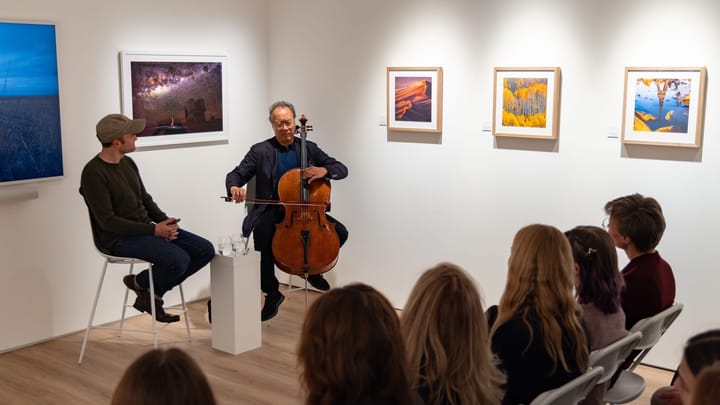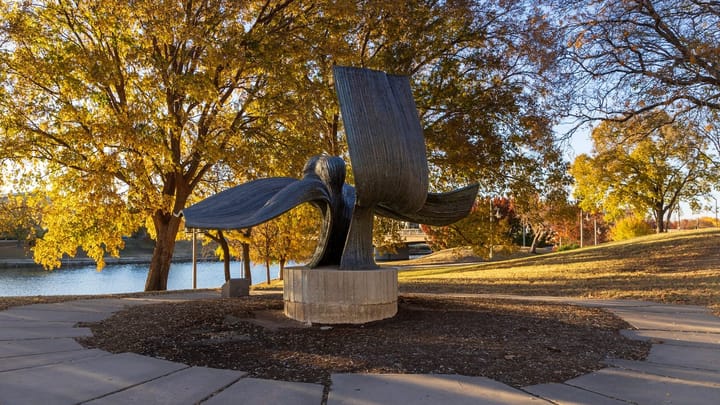A question of balance: John & Connie Ernatt's 'The Collaborators'
In a new exhibition at Diver Studio, the artists show fully collaborative works for the first time.
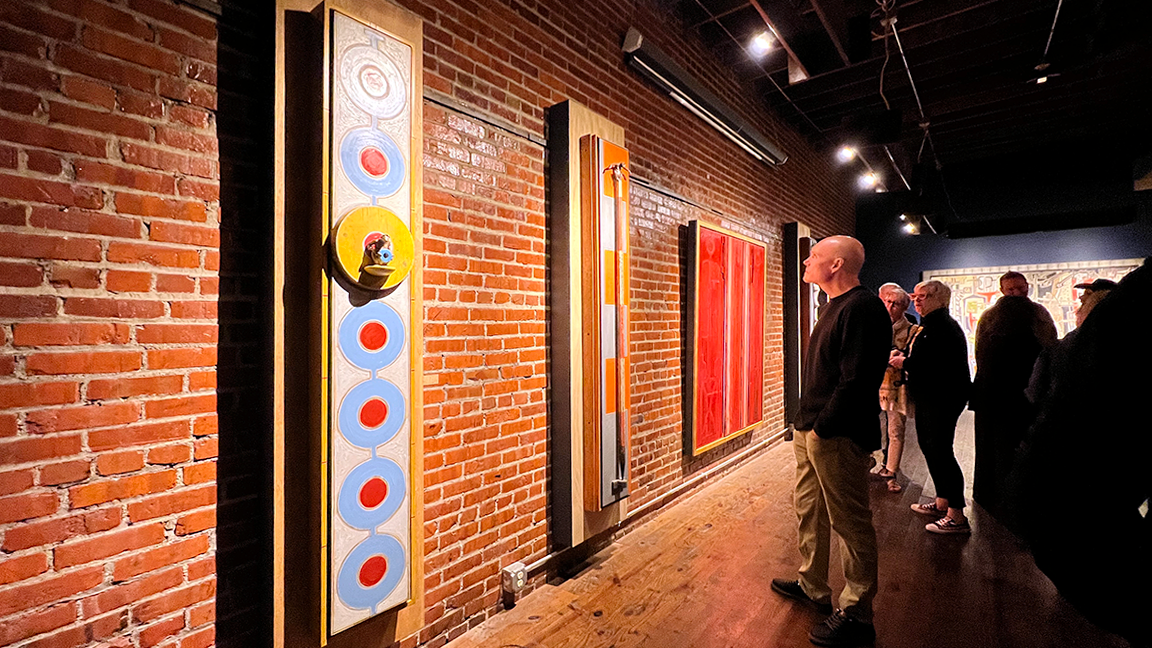
“The Collaborators” opened last Friday night at The Diver studio and art gallery on Commerce Street in downtown Wichita with the energy and buzz of a corona discharge — that crackling, electric emanation you sometimes sense around high-voltage power lines. The source of this excitation was the unveiling of a collection of new artworks by Connie and John Ernatt.
Art enthusiasts crowded shoulder-to-shoulder at times into The Diver’s two floors of gallery space for the opening of the Ernatts’ first exhibition together in Wichita in almost 10 years —and the first ever to feature fully collaborative pieces by the two Wichita-based artists. The opening event elicited rave reviews from attendees, some of whom described the night as “magical,” “spectacular,” “a great party,” and “nostalgically reminiscent of the early days of Final Fridays on Commerce Street.”
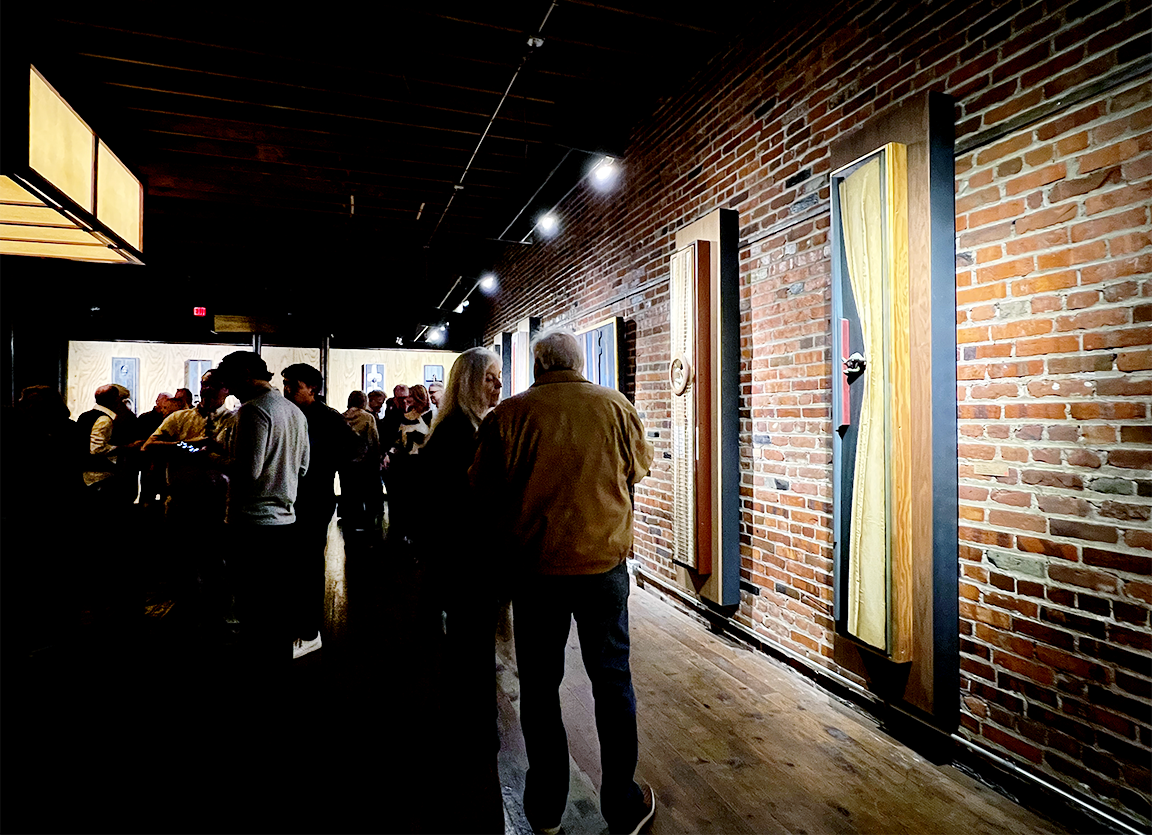
The opening of "The Collaborators" was reminiscent of the "early days of Commerce Street," one attendee said. Photos by Connie Kachel White for The SHOUT.
“Connie and John have been forces in the Wichita art scene for years,” says Jim Johnson, art historian and independent curator who was among the crowd of gallery-goers at the opening. “John is primarily a painter, although as a skilled craftsman he often includes assemblage in his work. Connie is a sculptor who works with cast bronze and found objects.”


Details from Connie Ernatt's work "Brain Swap," which is installed on the first floor of The Diver. Photos by Connie Kachel White for The SHOUT.
While Connie and John’s new collaborative works — 14 monolithic columns that are each part painting and part sculpture — provide the exhibition with its name, “The Collaborators” also includes individual works by each artist. Displayed on the first floor of the gallery, for example, (before ascending stairs to the main exhibition area) are two such pieces: Connie’s bronze assemblage titled "Brain Swap" and John’s "Green Press". The former features two cast bronze chimpanzee figures connected by wires passing through a miniature transmission tower that sparks to life when a red button is pushed, and the latter is a uniquely framed oil on panel work that’s the smallest of John’s pieces in the exhibition.
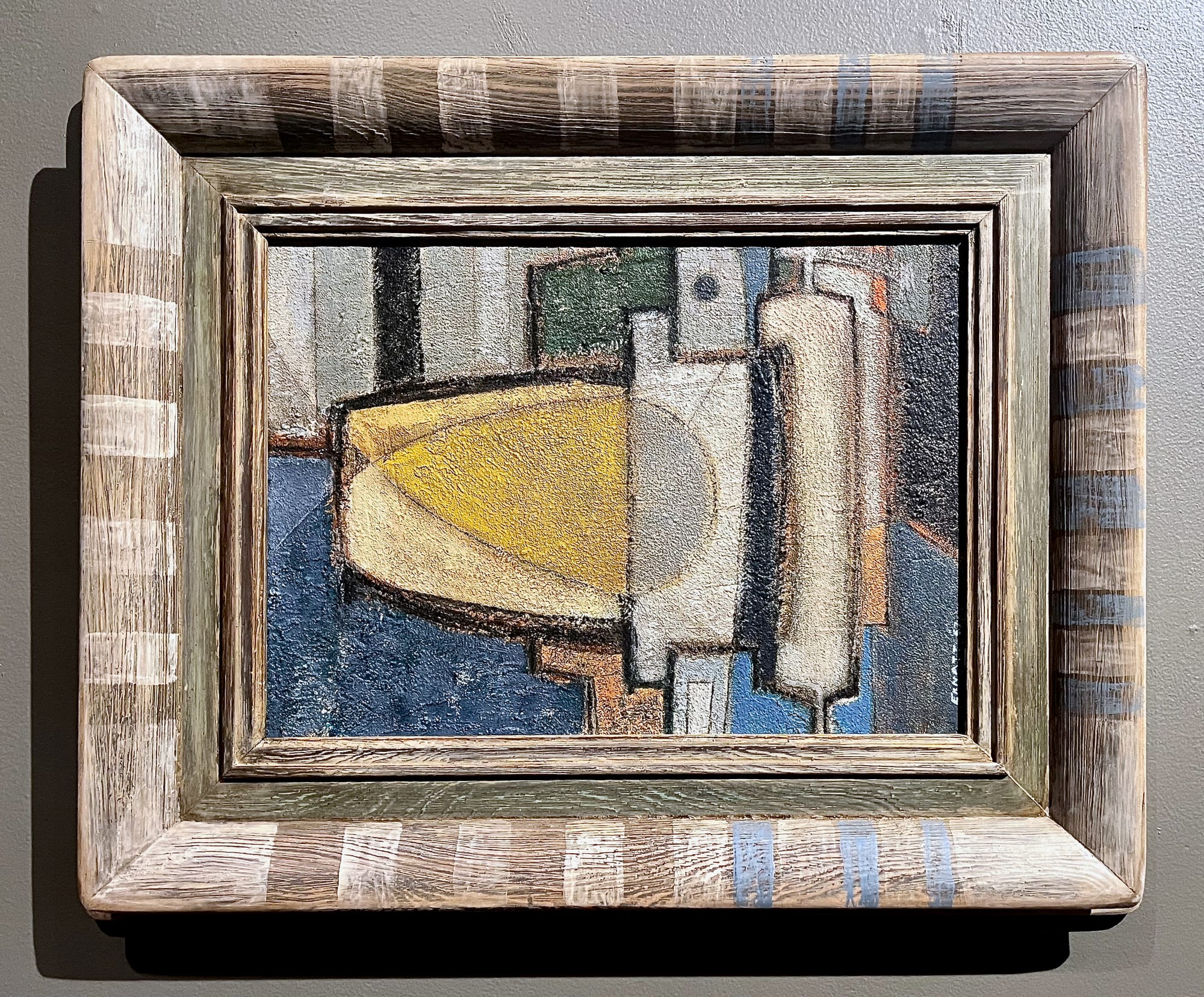
The Ernatts, who have been married for 25 years now, are well established as individual artists. Connie is perhaps most widely recognized for her public art, including the 7-foot-tall, 200-pound bronze Wichita Troll sculpture that lurks beneath a sidewalk grate along the Arkansas River. Her sculptures can also be found on the campus of Wichita State, at the Sedgwick County Zoo, and Botanica, the Wichita Gardens. Her smaller sculptures and assemblages, like "Brain Swap", often feature cast bronze chimps and found objects set in darkly comedic scenes that arc into multiple narratives.
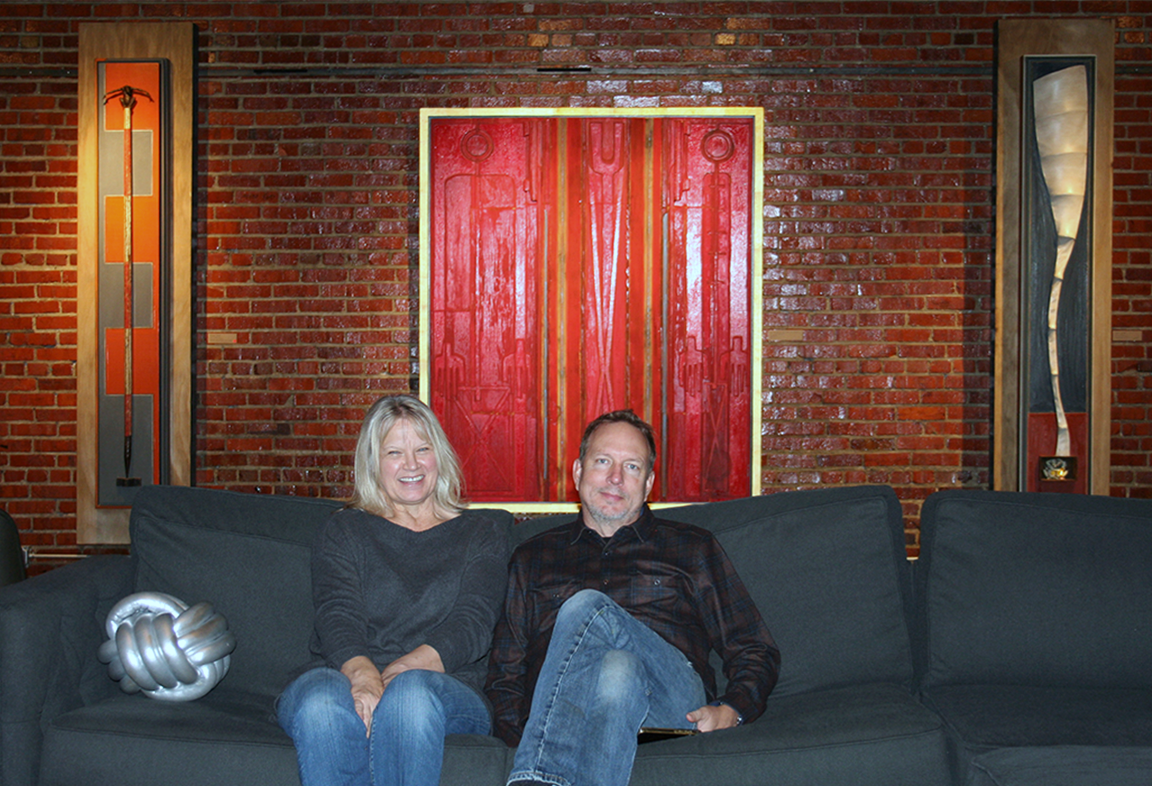
John, too, is noted for his public works, including his sculpture "The Attendant 1923" at Botanica. He’s best known, though, as an abstract painter and a founding member of the Fisch Haus, an artist collective that was seminal in the development in the early 1990s of the Wichita Arts District on Commerce Street. Both John and Connie hail from Wichita and are graduates of Wichita State. In 2006, they purchased the building at 424 S. Commerce — the original Fisch Haus location — to set up their own studio and gallery space. During the COVID-19 pandemic, they closed The Diver and focused on renovating the space.
The collective isolation caused by the pandemic was one of the prompts behind the couple’s heightened level of collaboration, which resulted in such works as "Corset", "Stage Right", "Funnel Cloud", "Orange Crush", "High Striker", and the 9 other bronze assemblages Connie and John worked together on over the past 18 to 24 months.
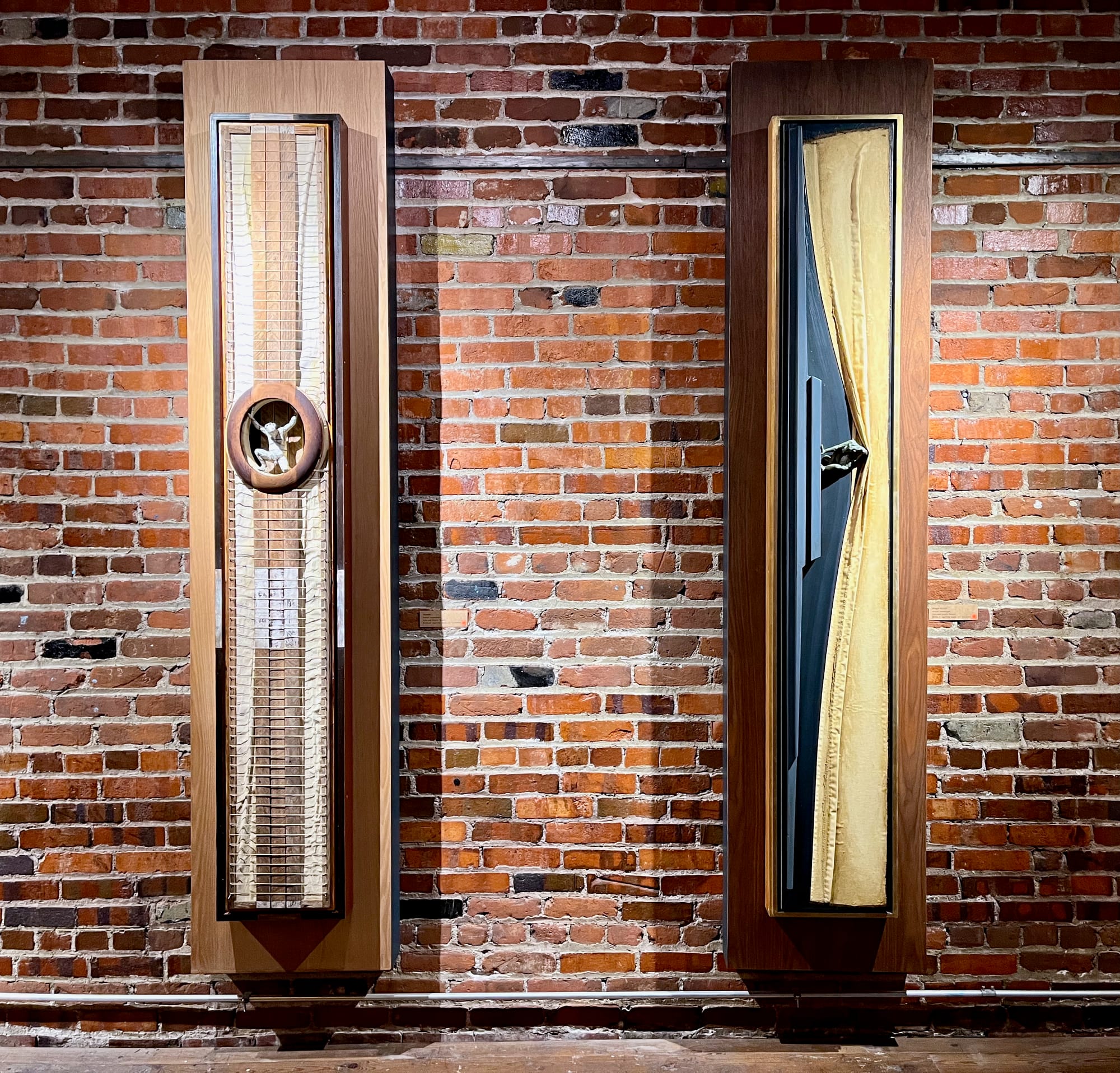
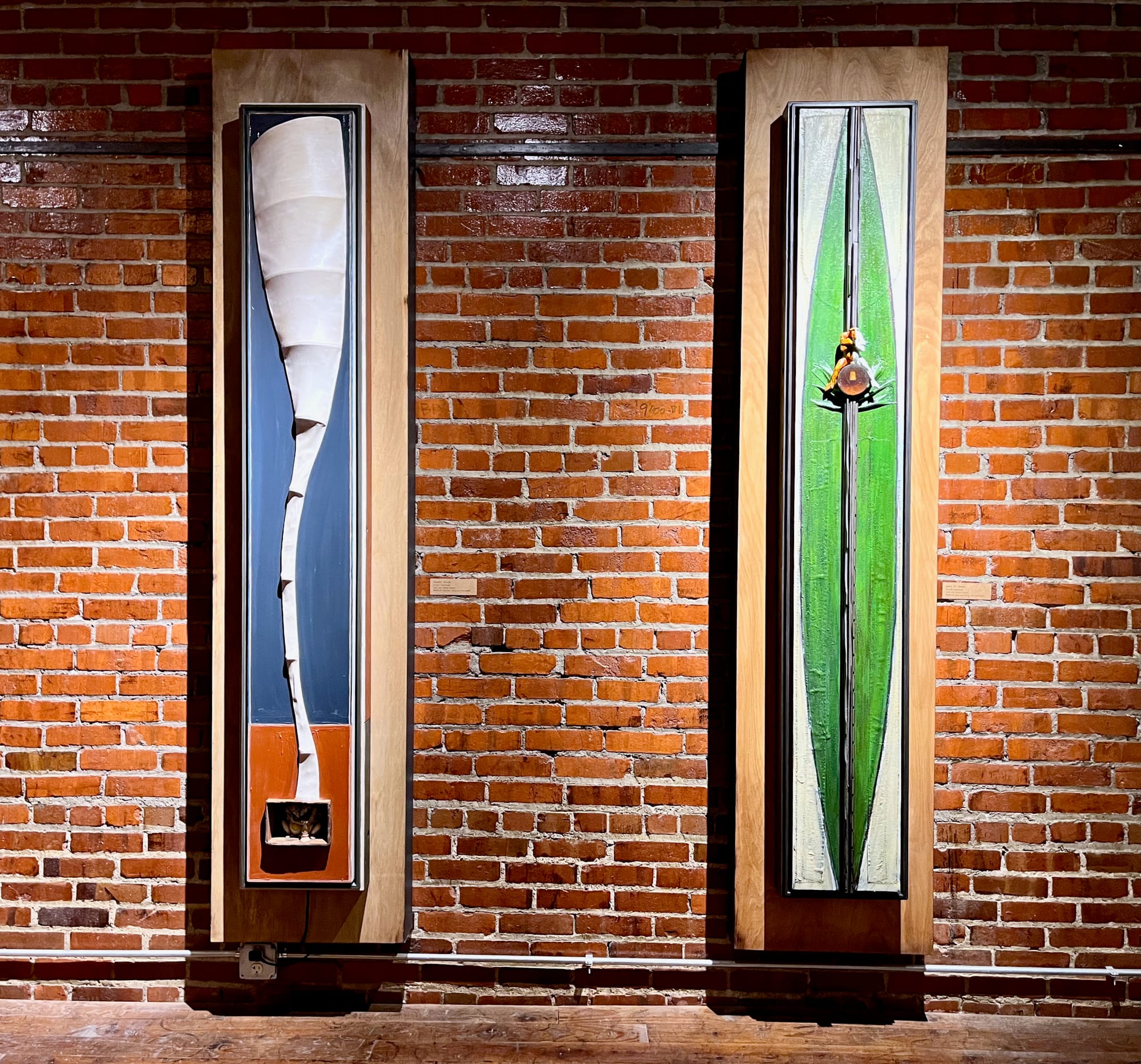
Another more personal reason came from their shared grief after the death of a family member. “My first exposure to the art world was through my uncle Michael,” John says. “He was my creative uncle who knew how to draw, he listened to cool music, had cool hair, and he had this incredible ability to create interior spaces. One of my favorite quotes about art is from Steve Martin. I don’t know if he coined it or not, but he once said one of the primary jobs of art is to let you know you’re in a special place. And my uncle, he could do that better than anybody.”
Not only was the interior renovation of The Diver guided by Michael’s example, the exhibition and its opening-night party were, too. “It would be impossible for just the two of us to put on something like this,” Connie says. “We have a crew of artists, patrons, friends, and family who we have a history of working with on projects together. If you’re a sculptor and you do big, heavy stuff, you get all your other sculpture friends to help you. We jump in and help each other.”
Our free email newsletter is like having a friend who always knows what's happening
Get the scoop on Wichita’s arts & culture scene: events, news, artist opportunities, and more. Free, weekly & worth your while.
No spam. Unsubscribe anytime.
"Red Right Hand" is the bronze assemblage that the Ernatts consider their “proof of concept” for their latest collaborative explorations of the confines of creativity. They restricted themselves to a repeated form and a straight-ahead focus on the basics of line, shape, and color. “We wanted to have a good balance of my painting and Connie’s sculpting,” John says. “The works didn’t have to mean anything. They didn’t have to say anything or teach anything. We just wanted to deal with the simplest elements of art, and then we would solve whatever problems we would come up against together.”
Because each of their collaborations incorporate either a created object or a found object, one of the first challenges they came up against was tamping down the layers of narrative lines that are part of Connie’s creations. “It's super challenging when you do stuff that's representational,” she says, “because it'll tend to draw the attention to it, versus the abstract painting — the chimp can overwhelm it really fast. For me, the challenge was trying to keep everything very balanced.”

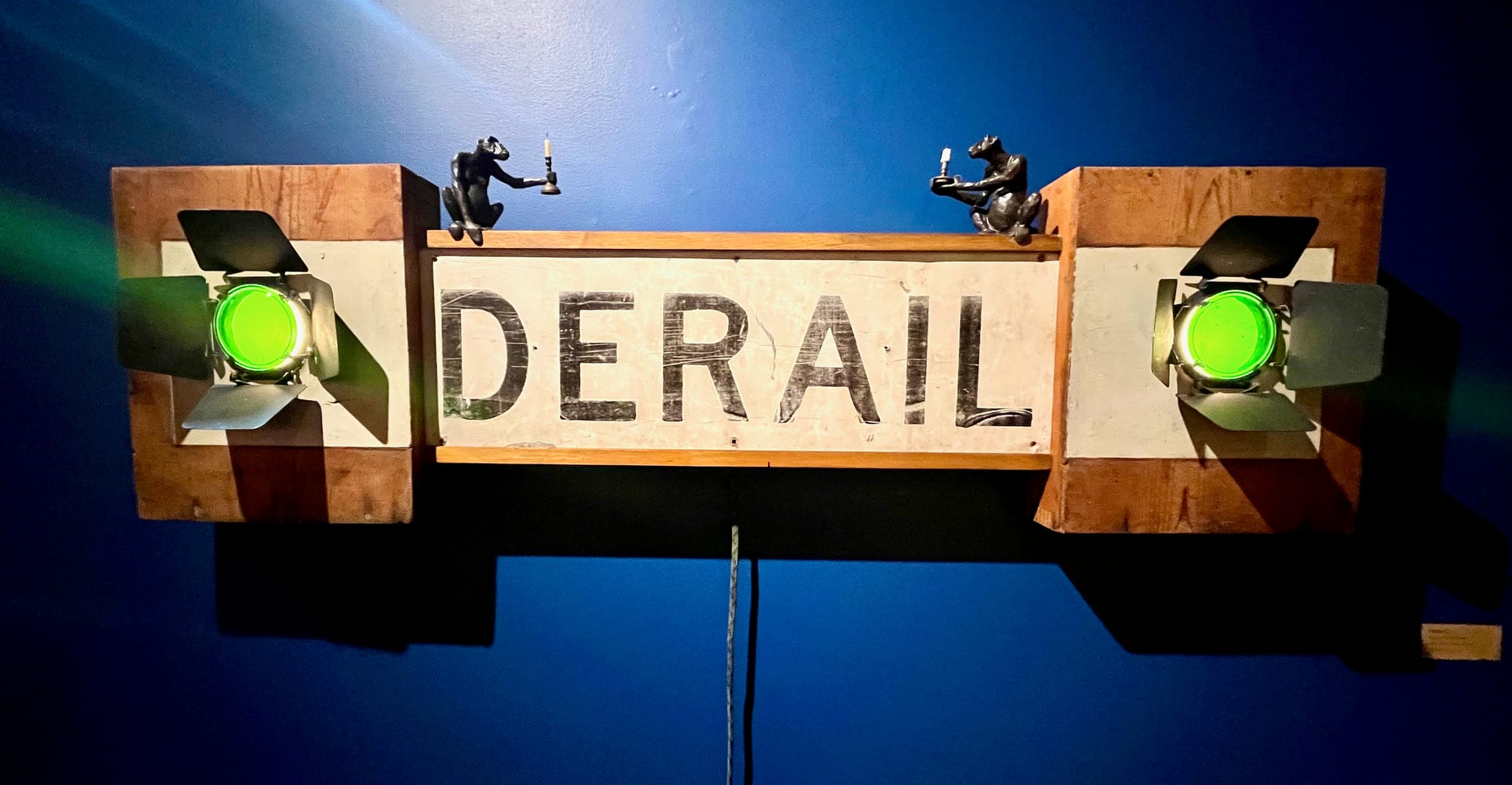
Found objects, including finding and identifying them, play key roles in her creative process. “My personal work starts with the journey of finding a piece, whatever it is,” says Connie, who grew up on a farm near Wichita. “I call it ‘collecting hours’ because I've collected a tool that someone used for hours or an inner tube that was repaired multiple times, a coffee pot that was tinkered with and repaired. That wear, that use is so interesting to me — it’s hours that someone loved this thing or needed this thing or used this thing, and I can take those hours and add them to my hours. I can create this energy in the piece. So, after I find an object, I’ve got to find out exactly what it is.”
She takes the time to identify and research the objects she finds. Once, she says, she found a bone that turned out to be “a whalebone specific to a blue whale, a bone that hangs below the vertebrae of the tail, and that’s special because on both sides of this bone, there are two floater bones — remnants of what was a pelvis from a time when whales had legs. Every object has this kind of information and that’s what gives me the start of an idea. The chimp just becomes my vehicle to talk about that — those layers upon layers of meaning that are there.”
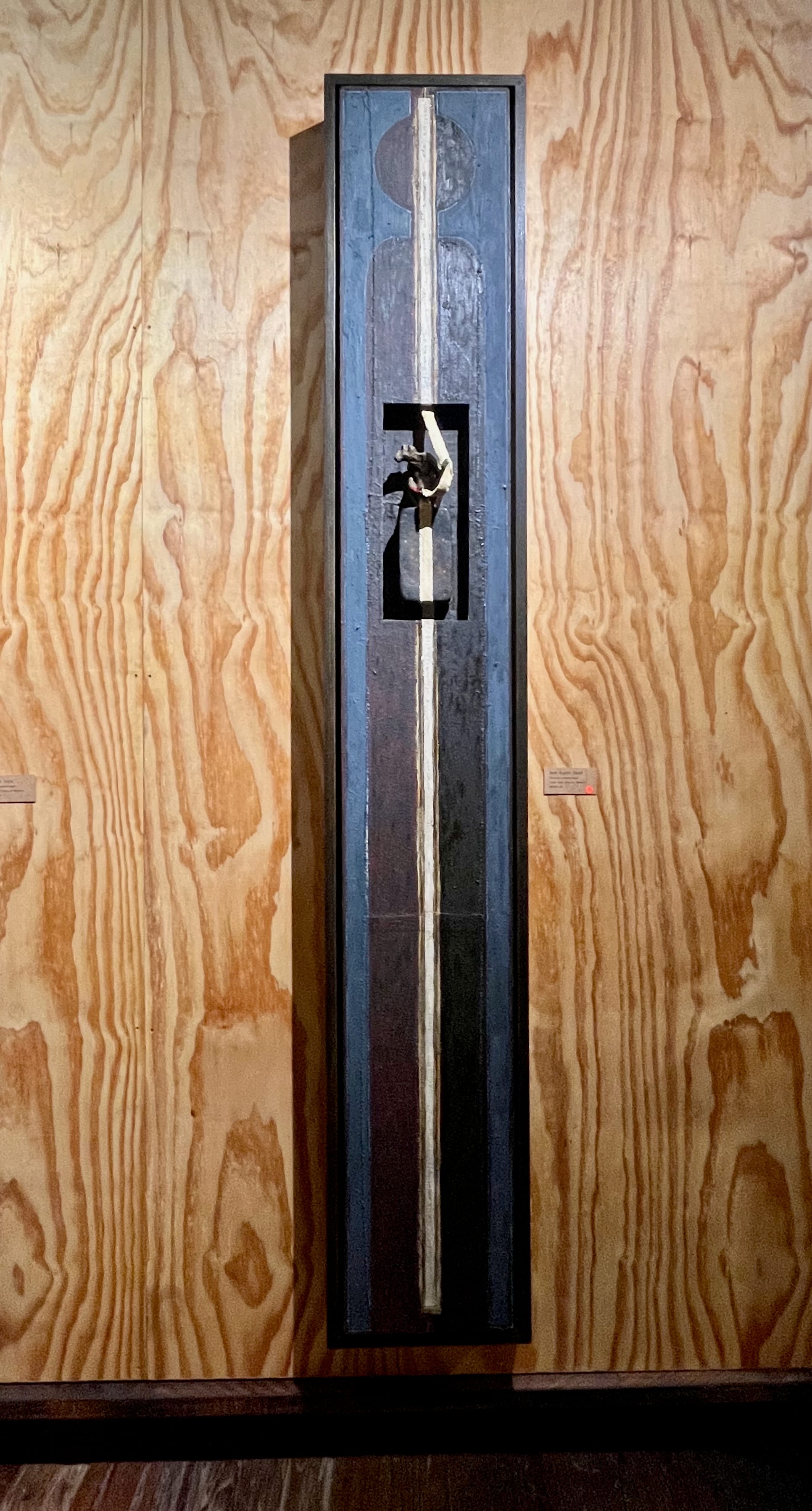

The bronze assemblage Red Right Hand served as proof of concept for the Ernatts. “I think it’s just kind of a quiet, elegant piece,” John says.
"Red Right Hand" is painted in the darkest hues of blue with an abstracted human figure in black divided in half by a central white stripe and rectangular inset found object (a tool of some sort?) atop which a bronze chimp with a red right hand sits. The chimp breaks out of the work’s linear front-surface boundary, although it still tied into the scene with a strip of white fabric. "Red Right Hand" is the first fully collaborative work that both Connie and John liked. “I think it’s just kind of a quiet, elegant piece,” he says, while she adds: “I knew we were off and running after that — this whole thing is going to work!”
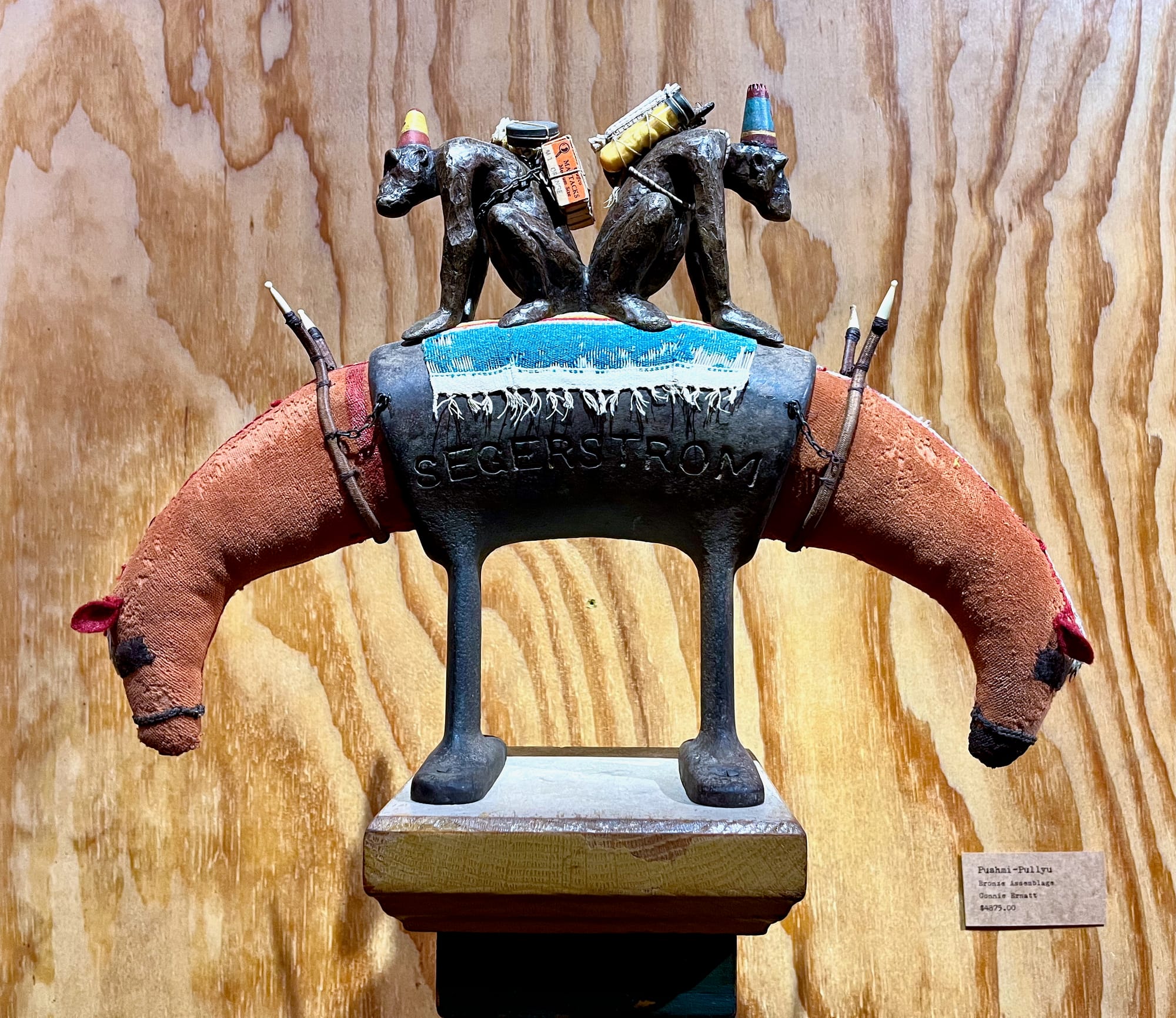
The whole thing indeed works, from the 14 new collaborations to the array of individual pieces that include John’s brilliantly colored and patterned "Sodbuster Series" of totem pole-like works in fiberglass, concrete, and paint, to Connie’s "Pushmi-Pullyu" bronze assemblage with two chimps, back-to-back, on blanketed horse figures with lowered heads — a work that somehow echoes the line and shape of James Earle Fraser’s sculpture "End of the Trail."

All of the artworks in “The Collaborators” help set the stage for future artistic treks for the Ernatts. “There’s a synergy in the exhibition that expands the impact of both artists,” Jim Johnson says. “It creates a new dimension of their work to be explored through this collaboration.”
And it serves as a proof of concept for all of us to know we’ve come to visit a very special place.
The Details
“The Collaborators”
October 24-December 31, 2025, at The Diver, 424 S Commerce St. in Wichita
“The Collaborators” will be on view at The Diver through the end of the year, with additional receptions during First Fridays on November 7 and December 5. Private showings are available by request.
Admission is free.
Accessibility note: The second-floor gallery is only accessible by stairs.
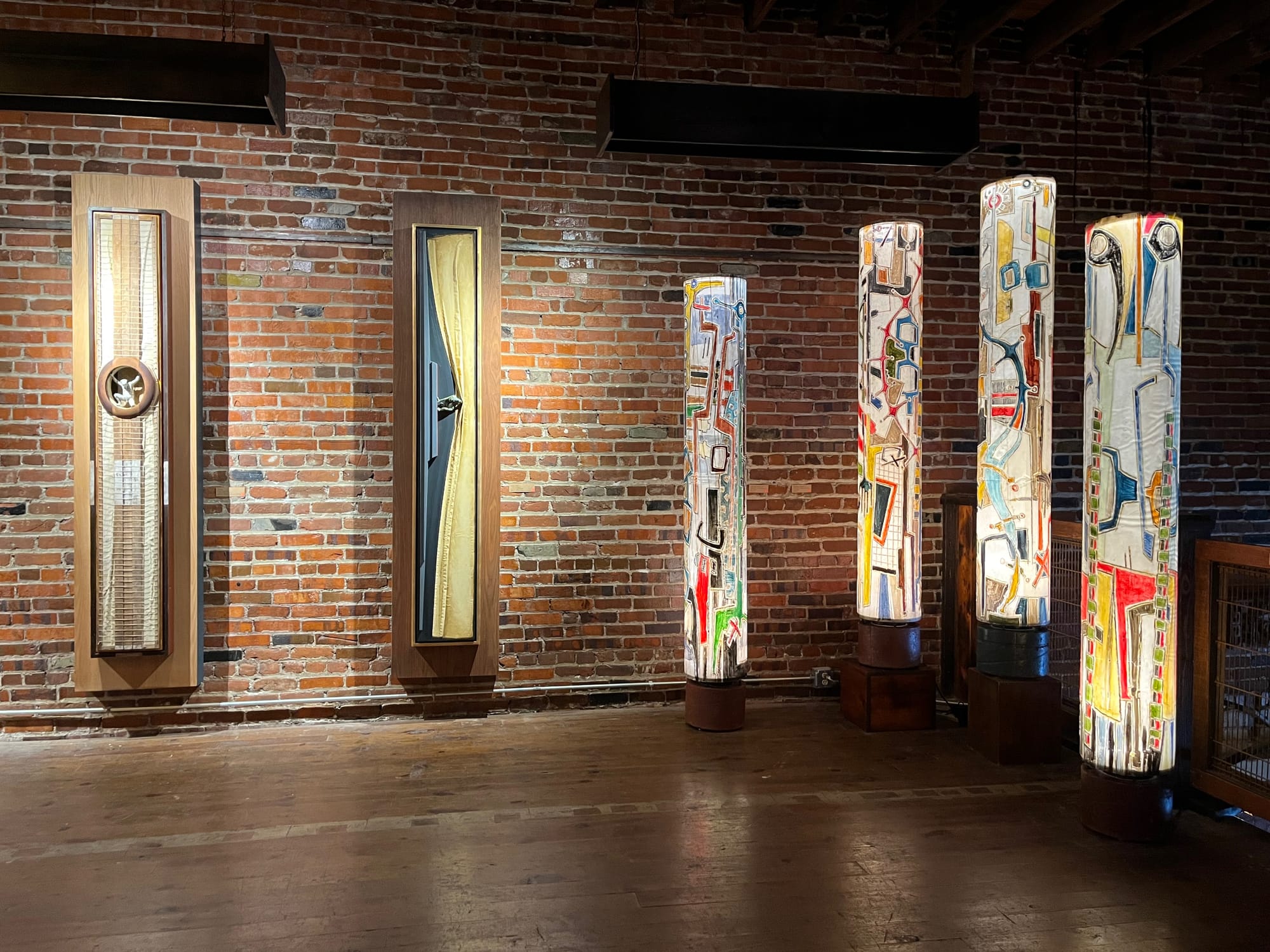
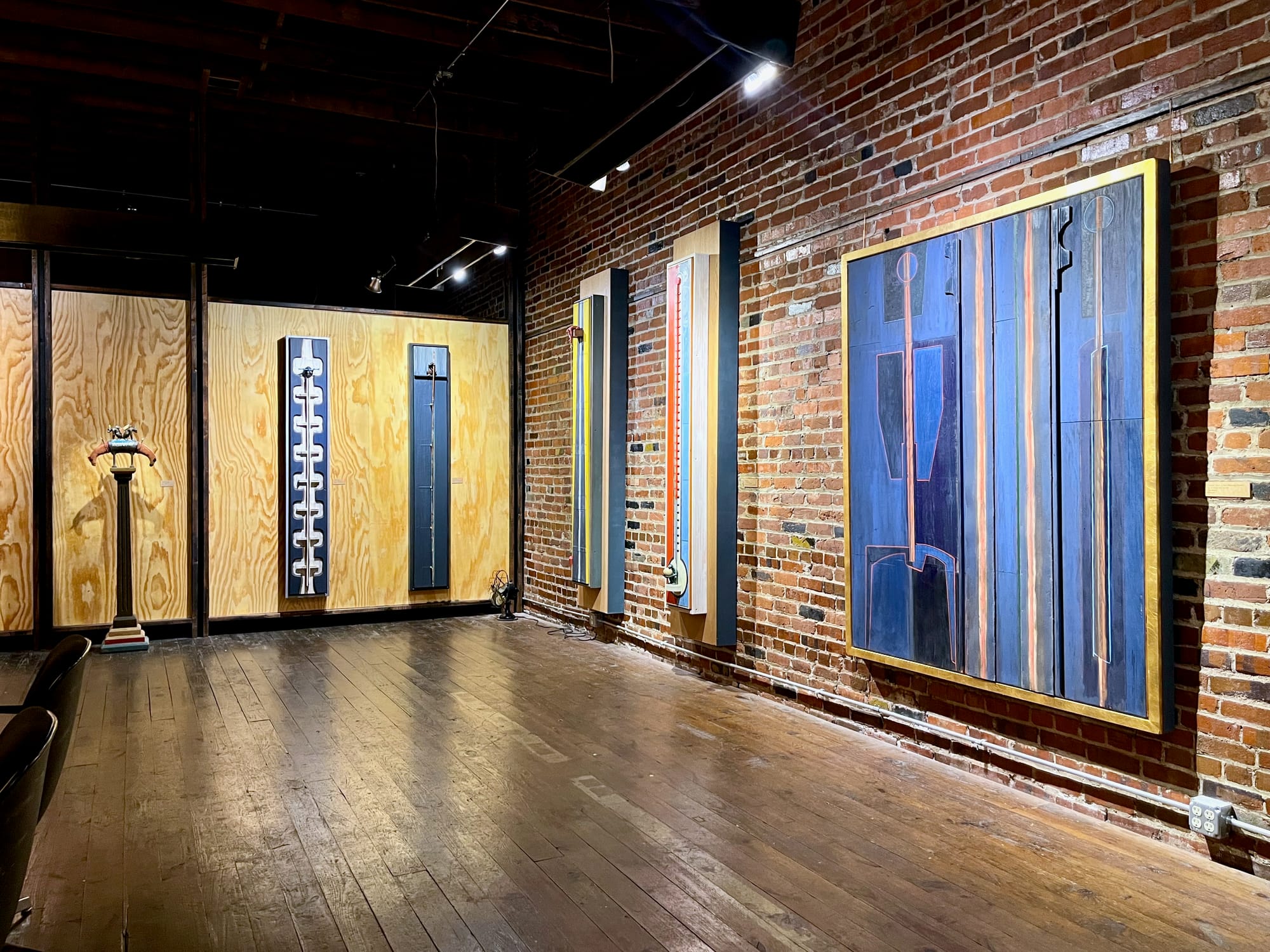
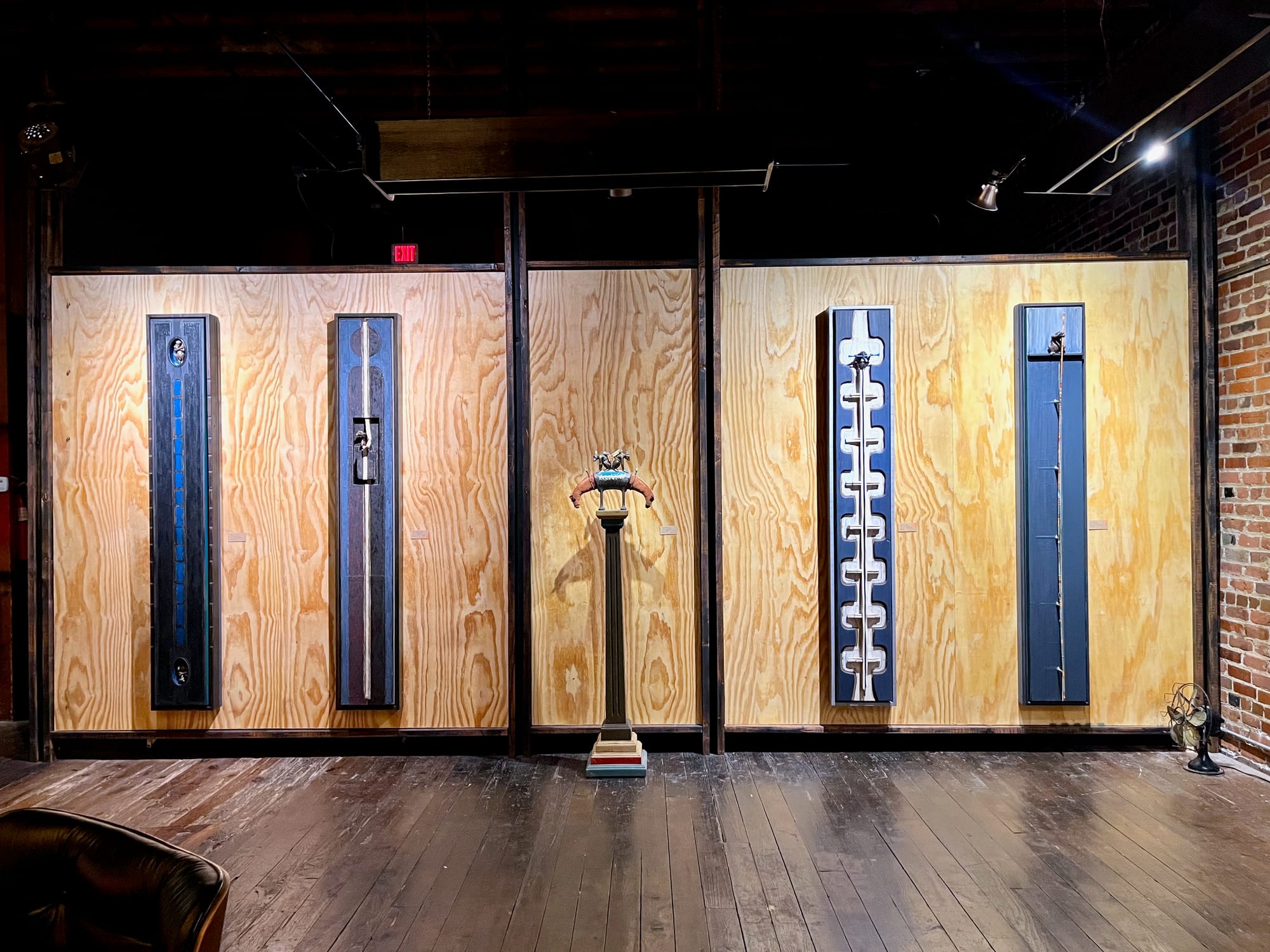

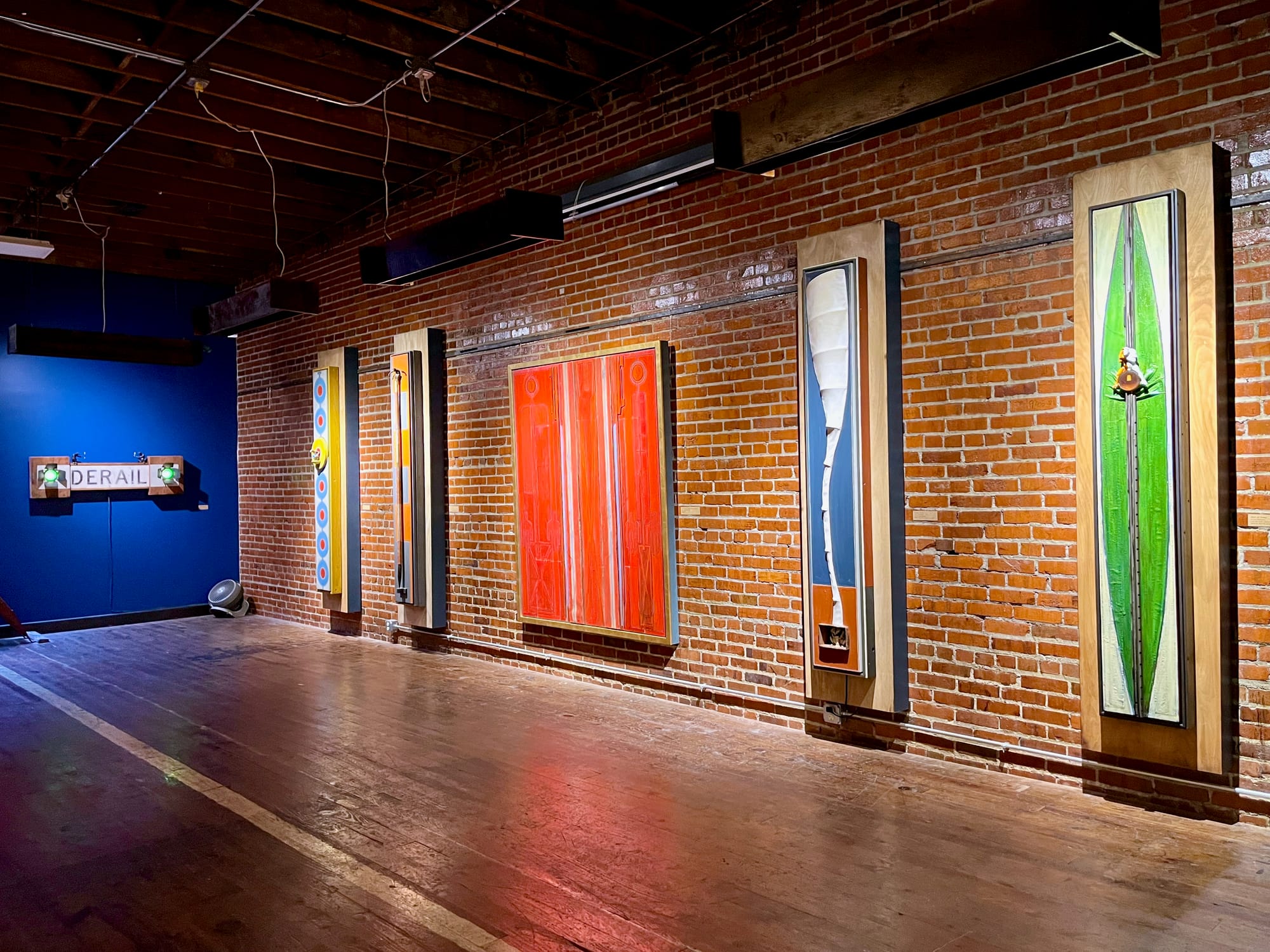
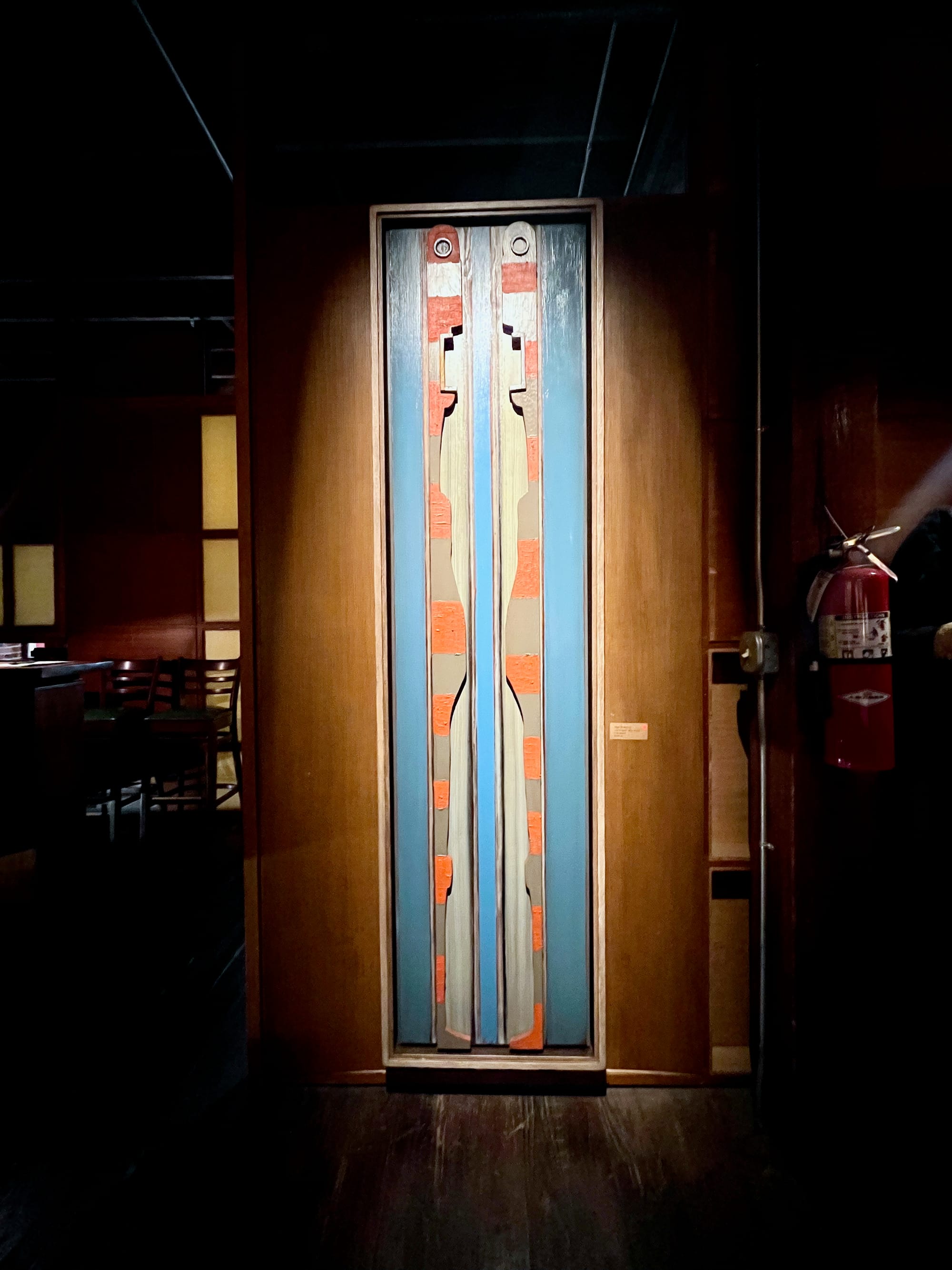
"The Collaborators" installation views. Photos by Emily Christensen for The SHOUT.
Connie Kachel White is a writer and editor who has written about the arts in Wichita for going on three decades now. White, whose communications gigs range from book-editing to investigative reporting, is the founding and current editor of Wichita State University’s The Shocker magazine. More of her writing can be found online at theshockermagazine.com and shockerconnect.com.
❋ Derby man has the kind of voice that turns heads — and chairs
❋ Socializing while sober: how some Wichitans are cultivating alcohol-free communities
❋ As a small creative business closes, the owner mourns
❋ Painting through it: Autumn Noire on 20 years of making art
❋ How a guy from Wichita resurrected 'Dawn of the Dead'
❋ Bygone Friends University museum housed curious collections
Support Kansas arts writing
The SHOUT is a Wichita-based independent newsroom focused on artists living and working in Kansas. We're partly supported by the generosity of our readers, and every dollar we receive goes directly into the pocket of a contributing writer, editor, or photographer. Click here to support our work with a tax-deductible donation.

